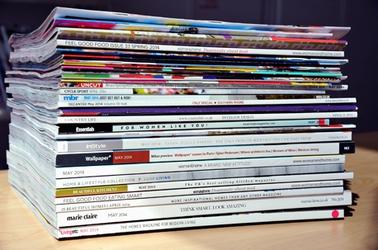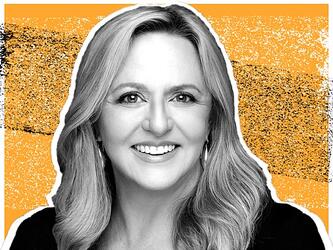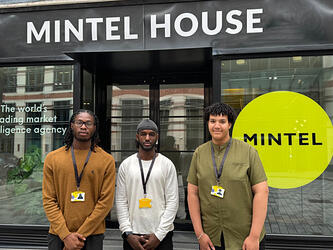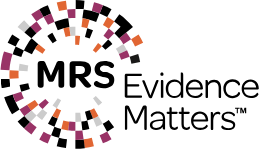Cover story
Which suits Amanda Wigginton, director of insight for IPC Media, down to the ground. Having worked for the magazine publisher for 13 years, and as head of the team for the past six of those, understanding readers’ habits is her lifeblood. So it’s not surprising that she refers to the role of insight within the organisation as “crucial”.
“Hand on heart, our consumers really are at the centre of everything we do: whether it’s understanding what they’re doing in their lives; what their behaviour is in relation to the category or with the magazine; or understanding what their needs are, all of that insight and understanding is essential to what we do. Insight is embedded in everything we do across the whole business. And I’m quite proud of that,” she says.
“You often hear about the backroom research team, I don’t describe my team as a backroom team; I think we’re central within the business. Testament to that is all the work we’ve done from NPD, editorial development, and strategy perspective or from advertising. We touch every part of the business. There are 16 of us, so we are a big team and we serve the whole business,” she adds.
Advertising value
Insight within IPC has a dual role. Not only does it give the company’s editorial brands valuable data and understanding on their markets, it also gives the same to advertisers. “Advertising agencies love insight, it’s a real door opener for the sales team and it starts a conversation,” says Wigginton. “And our editors are our crown jewels, they’re talking to their readers day in and day out, so it’s a real draw for the ad world. About 50–60% of what we do is on the ad side; the focus is on making money. Even on the other stuff we do, everything goes back to how can we use the knowledge we have about our consumers to drive our revenues and grow our business. We’re very commercial facing, which is also different for a research team.”
While research within IPC takes many different forms, one of its most recent, heavyweight projects has been looking at how readers interact with the brands across multiple platforms. ‘Connected Consumers’ analysed opinions of 3,500 consumers to determine how, when, where and why they read or looked at content.
It focused on eight brands: Marie Claire, InStyle, woman&home, Ideal Home, Now, Look, NME and Nuts (since closed). It was part of IPC’s Inspired Conversations initiative with the research done by Crowd DNA and YouGov via online surveys, online diaries, face-to-face and telephone interviews.
Mind states
What this research project achieved was to identify three new consumer ‘mind states’ as well as a greater understanding of how they accessed the brands across different platforms. It is no longer just a case of people turning to a print magazine during a moment of quiet ‘me time’, now they are looking at the brand at different times of the day, on different platforms.
The three mind states identified are: ‘catch-up time’,typically in the morning when people turn to apps and social media; ‘focus time’, normally during the day when people are more time-deprived; and ‘downtime’, this is when consumers are most receptive to advertising, typically in the evening, when people are relaxing – content is consumed across all platforms in this mind state.
“Connected Consumers came up because the way people are consuming our brands and content has completely changed and we need to help advertisers understand how to communicate and engage with them,” says Wigginton. “What’s interesting is the things that are changing or being amplified as a result of these new platforms. So, for instance, memory banking – people talk about their hoards of magazines at home, on a shelf, or they tear out pages and put them in a file. It’s all about keeping, memory banking or storing it for when you need it later. If you think about magazine brands on another platform, they make that easier, they don’t take up any space in your house and you can share socially, or you can book mark,” she says.
Wigginton’s approach to research across the organisation is to keep it very bespoke. “What you don’t want to do is commoditise it. The research that we do reflects what the objectives are for that brand or audience. We do have a customer database which we can tap into and it’s fast, quick and easy and we can manage it ourselves in-house. We don’t have brand panels per se but we’ll use that customer database – people who are interacting with our brand across all touchpoints; they might have downloaded the digital edition, they might be subscribers, or competition entrants.”
IPC also has a separate panel called the Origin Panel, which is a nationally representative sample of 7,500 women, who can be surveyed online. “Women are our core audience at IPC, we reach about 60% of all women in the UK,” says Wigginton. “We make it our business to know them inside out, so we’ll use that quite a lot within the broader market: how they’re feeling about the economy; what technology they’ve bought; what’s growing fastest; how important tablet devices are, etc. We also look generally at what trends are out there and how we can measure them from an insight perspective, so we overlay that as context to all the brand work we’re doing,” she says.
Understanding x, y, z
Magazines are in an interesting position where, on the one hand, they have subscribers and the associated data that brings. But on the other hand, many readers are more transient, dipping into magazines occasionally. So does that make it harder from a research perspective?
“The world we’re now entering is the difference between the claimed and the actual data and it’s quite interesting – neither are wrong but you need both for the complete view,” says Wigginton. “We (as a research team) are trying to show the most representative and complete view. If we use our subs database – on average, say, 30% of our total sales are subs – you’re only looking at a small proportion of your market, so you need to go broader. So I can do that via the magazine or an online survey, but now we’ve also got all the digital data we can include.”
Wigginton firmly believes that the exponential rise of data – particularly digital data – has made the role of the insight team all the more valuable.
Value of data
“There’s only so much you can get from that data; you still need to go out and look customers in the whites of their eyes in order to understand exactly why they are doing x, y and z. Data is brilliant and it’s quite interesting to compare what people do with what they say they do, because we all know the two things can be completely different. It’s a great sense check for that. Data can provide you with a hypothesis or an indication or set of variables but you still need to test them. It’s a bit contentious but all the data evangelists stand up there and say ‘insight is dead’ but I really don’t agree with that,” she adds.
Alongside the proprietary stuff, Wigginton points to the wealth of syndicated data available. “There’s a lot of readership stuff, like the National Readership Survey. And we’ve got TGI, all of that data we can use to build a brand-by-brand perspective.
“Everything is about balance,” she explains. “We’re juggling all this different data into streams to make them all work and fit together. My team’s role is to wave the magic wand that turns all that data into an insight that’s meaningful for the business – whether that’s explaining how our consumers go from one platform to another, or how their relationship with our brands is changing.”
So with the benefit of insight and a stable of strong brands, it has been possible for IPC to weather the maelstrom that has hit the world of publishing, be it print or digital. It has meant that, while there may be victims along the way – like Nuts – there will also be even stronger survivors.
“I think what our Connected Consumers work proves is that magazine brands remain highly regarded and trusted. For premium quality, curated content, editors are their heroes. When we’ve done specific research around magazine brands and websites, that’s what really stands out – that they trust that premium content, they’re familiar with who it’s coming from,” concludes Wigginton.
This article was first published in Impact magazine, Issue 6 July 2014.

We hope you enjoyed this article.
Research Live is published by MRS.
The Market Research Society (MRS) exists to promote and protect the research sector, showcasing how research delivers impact for businesses and government.
Members of MRS enjoy many benefits including tailoured policy guidance, discounts on training and conferences, and access to member-only content.
For example, there's an archive of winning case studies from over a decade of MRS Awards.
Find out more about the benefits of joining MRS here.












0 Comments